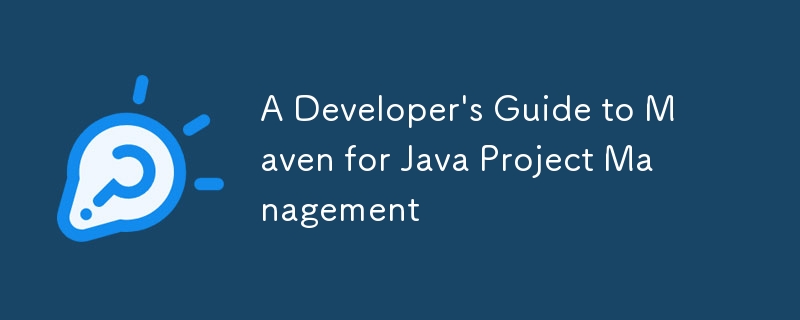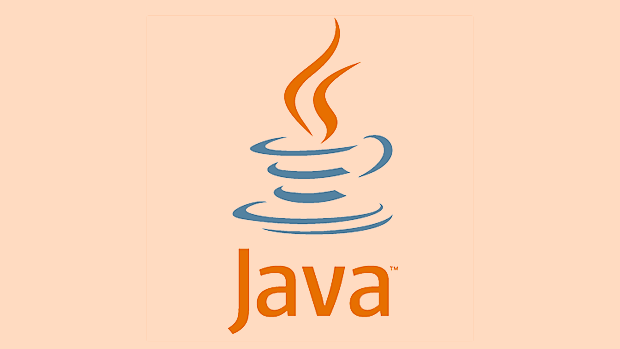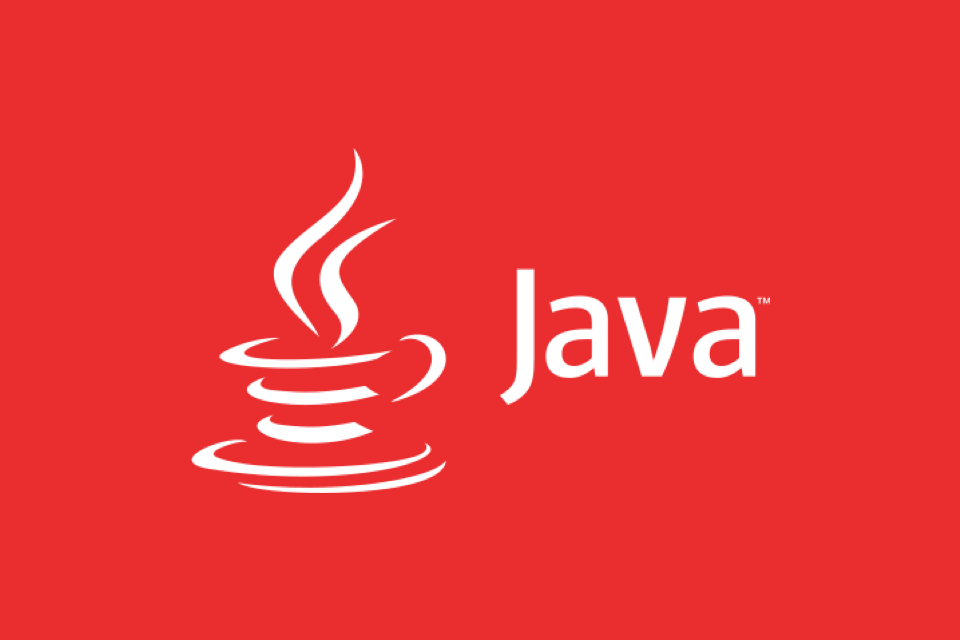A Developer's Guide to Maven for Java Project Management
Jul 30, 2025 am 02:41 AMMaven is a standard tool for Java project management and construction. The answer lies in the fact that it can standardize the project structure, dependency management, build lifecycle automation and plug-in extensions through pom.xml; 1. Use pom.xml to define groupId, artifactId, version and dependencies; 2. Master core commands such as mvn clean, compile, test, package, install and deploy; 3. Use dependencyManagement and exclusions to manage dependency versions and conflicts; 4. Organize large applications through a multi-module project structure and manage them uniformly by the parent POM; 5. Configure compiler, surefire and other plug-ins to customize build behavior; 6. Follow best practices such as using semantic versions, avoid SNAPSHOT, enable parallel builds, and use Maven Wrapper Ensure environmental consistency and ultimately achieve a repeatable, maintainable, and efficient construction process for teamwork.

Maven isn't just a build tool—it's a project management and comprehension tool that brings consistency, automation, and structure to Java development. If you're building Java applications, especially in teams or across multiple projects, Maven helps standardize how you build, test, package, and deploy your code. Here's a practical guide to using Maven effectively as a developer.

Why Use Maven?
Before diving into how it works, understand why Maven matters:
- Standardized project structure : Everyone on your team knows where source files, resources, and tests live.
- Dependency management : No more manually downloading JARs. Maven pulls them from repositories (like Maven Central).
- Build lifecycle : Compile, test, package, and deploy with consistent commands.
- Plugins ecosystem : Extend functionality for code coverage, documentation, Docker builds, etc.
- Reproducible builds : With a
pom.xml, anyone can rebuild your project the same way.
Maven removes guesswork. That's its real power.

Understanding the POM (Project Object Model)
The heart of every Maven project is the pom.xml file. It defines everything about your project: metadata, dependencies, plugins, profiles, and more.
Here's a minimum example:

<project xmlns="http://maven.apache.org/POM/4.0.0"
xmlns:xsi="http://www.w3.org/2001/XMLSchema-instance"
xsi:schemaLocation="http://maven.apache.org/POM/4.0.0
http://maven.apache.org/xsd/maven-4.0.0.xsd">
<modelVersion>4.0.0</modelVersion>
<groupId>com.example</groupId>
<artifactId>my-app</artifactId>
<version>1.0.0</version>
<packaging>jar</packaging>
<properties>
<maven.compiler.source>11</maven.compiler.source>
<maven.compiler.target>11</maven.compiler.target>
</properties>
<dependencies>
<dependency>
<groupId>junit</groupId>
<artifactId>junit</artifactId>
<version>4.13.2</version>
<scope>test</scope>
</dependency>
</dependencies>
</project>Key elements:
-
groupId: Your organization or project namespace. -
artifactId: Name of your project. -
version: Version number (follow semantic versioning). -
dependencies: Libraries your project needs. -
properties: Define reusable values like Java version.
? Pro tip: Use http://ipnx.cn/link/9c6ebba8ac5389aed2beda98d31e91af to search for dependency coordinates quickly.
Core Maven Commands Every Developer Should Know
You don't need to memorize dozens of goals—just a handful of key commands.
| Command | Purpose |
|---|---|
mvn compile | Compiles source code |
mvn test | Runs unit tests |
mvn package | Builds JAR/WAR file |
mvn clean | Deletes target/ directory |
mvn install | Installs your package into the local .m2 repository |
mvn deploy | Deploys to a remote repository (eg, Nexus, Artifactory) |
Common combo:
mvn clean install
This wipes old builds, compiles, runs tests, packages, and installs the artifact locally—perfect for integration or CI pipelines.
?? If tests fail,
installstops. Usemvn install -DskipTeststo bypass (but don't overuse it).
Managing Dependencies Like a Pro
Maven handles transitive dependencies automatically. If you add Spring Web, it pulls in Jackson, Spring Core, etc.—no need to declare them all.
But this can lead to conflicts. Here's how to manage:
1. Dependency Scope
Use scopes to control when a dependency is available:
-
compile(default): Available in all phases. -
test: Only for testing (eg, JUnit). -
provided: Expected to be provided by runtime (eg, Servlet API in Tomcat). -
runtime: Needed at runtime but not compile time (eg, JDBC driver). -
system/import: Rare; use with caution.
2. Excluding Transitive Dependencies
If a library pulls in an outdated or conflicting dependency:
<dependency>
<groupId>org.springframework</groupId>
<artifactId>spring-web</artifactId>
<version>5.3.0</version>
<exclusions>
<exclusion>
<groupId>commons-logging</groupId>
<artifactId>commons-logging</artifactId>
</exclusion>
</exclusions>
</dependency>3. Dependency Management
Use <dependencyManagement> in parent POMs to centralize versions across modules:
<dependencyManagement>
<dependencies>
<dependency>
<groupId>org.springframework</groupId>
<artifactId>spring-core</artifactId>
<version>5.3.21</version>
</dependency>
</dependencies>
</dependencyManagement> Now child modules can include spring-core without specifying version.
Multi-Module Projects Made Simple
For larger applications (eg, API, service layer, domain models), break your app into modules.
Structure:
parent-project/
├── pom.xml (packaging: pom)
├── api/
│ └── pom.xml
├── service/
│ └── pom.xml
└── persistence/
└── pom.xml Parent pom.xml :
<packaging>pom</packaging>
<modules>
<module>api</module>
<module>service</module>
<module>persistence</module>
</modules>Each submodule can depend on another:
<dependency>
<groupId>com.example</groupId>
<artifactId>persistence</artifactId>
<version>1.0.0</version>
</dependency> Run mvn clean install from the parent, and Maven builds modules in the correct order.
Customizing Builds with Plugins
Maven plugins perform tasks like compiling, testing, or generating code.
Common examples:
Compiler Plugin : Set Java version
<plugin> <groupId>org.apache.maven.plugins</groupId> <artifactId>maven-compiler-plugin</artifactId> <version>3.11.0</version> <configuration> <source>11</source> <target>11</target> </configuration> </plugin>Surefire Plugin : Control test execution
<plugin> <groupId>org.apache.maven.plugins</groupId> <artifactId>maven-surefire-plugin</artifactId> <version>3.1.2</version> <configuration> <includes> <include>**/*Test.java</include> </includes> </configuration> </plugin>JAR Plugin : Customize manifest
<plugin> <groupId>org.apache.maven.plugins</groupId> <artifactId>maven-jar-plugin</artifactId> <version>3.3.0</version> <configuration> <archive> <manifest> <addClasspath>true</addClasspath> <mainClass>com.example.MainApp</mainClass> </manifest> </archive> </configuration> </plugin>
You can even run shell scripts or Docker builds via plugins like exec-maven-plugin or spotify/dockerfile-maven-plugin .
Best Practices for Real-World Use
- ? Use a consistent versioning scheme (eg, semantic versioning).
- ? Keep
pom.xmlclean —avoid hardcoding versions; use<dependencyManagement>. - ? Leverage parent POMs (like Spring Boot's
spring-boot-starter-parent) to inherit sensitive defaults. - ? Enable parallel builds in multi-module projects:
mvn -T 4 clean install - ? Use profiles for environment-specific configs (dev, prod, test).
- ? Don't commit
target/directories—add to.gitignore. - ? Avoid
SNAPSHOTversions in production.
Also consider using Maven Wrapper ( mvnw ) so teammates don't need Maven pre-installed:
./mvnw clean install
It downloads Maven automatically if missing.
Final Thoughts
Maven has been around for years—and for good reason. It's stable, widely supported, and deeply integrated into tools like IDEs (IntelliJ, Eclipse), CI/CD systems (Jenkins, GitHub Actions), and frameworks (Spring, Jakarta EE).
You don't need to master every detail upfront. Start with:
- Writing a solid
pom.xml - Running basic lifecycle commands
- Managing dependencies properly
From there, grow into multi-module settings, custom plugins, and automation.
Basically, if you're doing Java, Maven should be in your toolkit.
The above is the detailed content of A Developer's Guide to Maven for Java Project Management. For more information, please follow other related articles on the PHP Chinese website!

Hot AI Tools

Undress AI Tool
Undress images for free

Undresser.AI Undress
AI-powered app for creating realistic nude photos

AI Clothes Remover
Online AI tool for removing clothes from photos.

Clothoff.io
AI clothes remover

Video Face Swap
Swap faces in any video effortlessly with our completely free AI face swap tool!

Hot Article

Hot Tools

Notepad++7.3.1
Easy-to-use and free code editor

SublimeText3 Chinese version
Chinese version, very easy to use

Zend Studio 13.0.1
Powerful PHP integrated development environment

Dreamweaver CS6
Visual web development tools

SublimeText3 Mac version
God-level code editing software (SublimeText3)

Hot Topics
 A Developer's Guide to Maven for Java Project Management
Jul 30, 2025 am 02:41 AM
A Developer's Guide to Maven for Java Project Management
Jul 30, 2025 am 02:41 AM
Maven is a standard tool for Java project management and construction. The answer lies in the fact that it uses pom.xml to standardize project structure, dependency management, construction lifecycle automation and plug-in extensions; 1. Use pom.xml to define groupId, artifactId, version and dependencies; 2. Master core commands such as mvnclean, compile, test, package, install and deploy; 3. Use dependencyManagement and exclusions to manage dependency versions and conflicts; 4. Organize large applications through multi-module project structure and are managed uniformly by the parent POM; 5.
 Building RESTful APIs in Java with Jakarta EE
Jul 30, 2025 am 03:05 AM
Building RESTful APIs in Java with Jakarta EE
Jul 30, 2025 am 03:05 AM
SetupaMaven/GradleprojectwithJAX-RSdependencieslikeJersey;2.CreateaRESTresourceusingannotationssuchas@Pathand@GET;3.ConfiguretheapplicationviaApplicationsubclassorweb.xml;4.AddJacksonforJSONbindingbyincludingjersey-media-json-jackson;5.DeploytoaJakar
 python property decorator example
Jul 30, 2025 am 02:17 AM
python property decorator example
Jul 30, 2025 am 02:17 AM
@property decorator is used to convert methods into properties to implement the reading, setting and deletion control of properties. 1. Basic usage: define read-only attributes through @property, such as area calculated based on radius and accessed directly; 2. Advanced usage: use @name.setter and @name.deleter to implement attribute assignment verification and deletion operations; 3. Practical application: perform data verification in setters, such as BankAccount to ensure that the balance is not negative; 4. Naming specification: internal variables are prefixed, property method names are consistent with attributes, and unified access control is used to improve code security and maintainability.
 css dark mode toggle example
Jul 30, 2025 am 05:28 AM
css dark mode toggle example
Jul 30, 2025 am 05:28 AM
First, use JavaScript to obtain the user system preferences and locally stored theme settings, and initialize the page theme; 1. The HTML structure contains a button to trigger topic switching; 2. CSS uses: root to define bright theme variables, .dark-mode class defines dark theme variables, and applies these variables through var(); 3. JavaScript detects prefers-color-scheme and reads localStorage to determine the initial theme; 4. Switch the dark-mode class on the html element when clicking the button, and saves the current state to localStorage; 5. All color changes are accompanied by 0.3 seconds transition animation to enhance the user
 Developing a Blockchain Application in Java
Jul 30, 2025 am 12:43 AM
Developing a Blockchain Application in Java
Jul 30, 2025 am 12:43 AM
Understand the core components of blockchain, including blocks, hashs, chain structures, consensus mechanisms and immutability; 2. Create a Block class that contains data, timestamps, previous hash and Nonce, and implement SHA-256 hash calculation and proof of work mining; 3. Build a Blockchain class to manage block lists, initialize the Genesis block, add new blocks and verify the integrity of the chain; 4. Write the main test blockchain, add transaction data blocks in turn and output chain status; 5. Optional enhancement functions include transaction support, P2P network, digital signature, RESTAPI and data persistence; 6. You can use Java blockchain libraries such as HyperledgerFabric, Web3J or Corda for production-level opening
 css dropdown menu example
Jul 30, 2025 am 05:36 AM
css dropdown menu example
Jul 30, 2025 am 05:36 AM
Yes, a common CSS drop-down menu can be implemented through pure HTML and CSS without JavaScript. 1. Use nested ul and li to build a menu structure; 2. Use the:hover pseudo-class to control the display and hiding of pull-down content; 3. Set position:relative for parent li, and the submenu is positioned using position:absolute; 4. The submenu defaults to display:none, which becomes display:block when hovered; 5. Multi-level pull-down can be achieved through nesting, combined with transition, and add fade-in animations, and adapted to mobile terminals with media queries. The entire solution is simple and does not require JavaScript support, which is suitable for large
 How to use Java MessageDigest for hashing (MD5, SHA-256)?
Jul 30, 2025 am 02:58 AM
How to use Java MessageDigest for hashing (MD5, SHA-256)?
Jul 30, 2025 am 02:58 AM
To generate hash values using Java, it can be implemented through the MessageDigest class. 1. Get an instance of the specified algorithm, such as MD5 or SHA-256; 2. Call the .update() method to pass in the data to be encrypted; 3. Call the .digest() method to obtain a hash byte array; 4. Convert the byte array into a hexadecimal string for reading; for inputs such as large files, read in chunks and call .update() multiple times; it is recommended to use SHA-256 instead of MD5 or SHA-1 to ensure security.
 python parse date string example
Jul 30, 2025 am 03:32 AM
python parse date string example
Jul 30, 2025 am 03:32 AM
Use datetime.strptime() to convert date strings into datetime object. 1. Basic usage: parse "2023-10-05" as datetime object through "%Y-%m-%d"; 2. Supports multiple formats such as "%m/%d/%Y" to parse American dates, "%d/%m/%Y" to parse British dates, "%b%d,%Y%I:%M%p" to parse time with AM/PM; 3. Use dateutil.parser.parse() to automatically infer unknown formats; 4. Use .d






